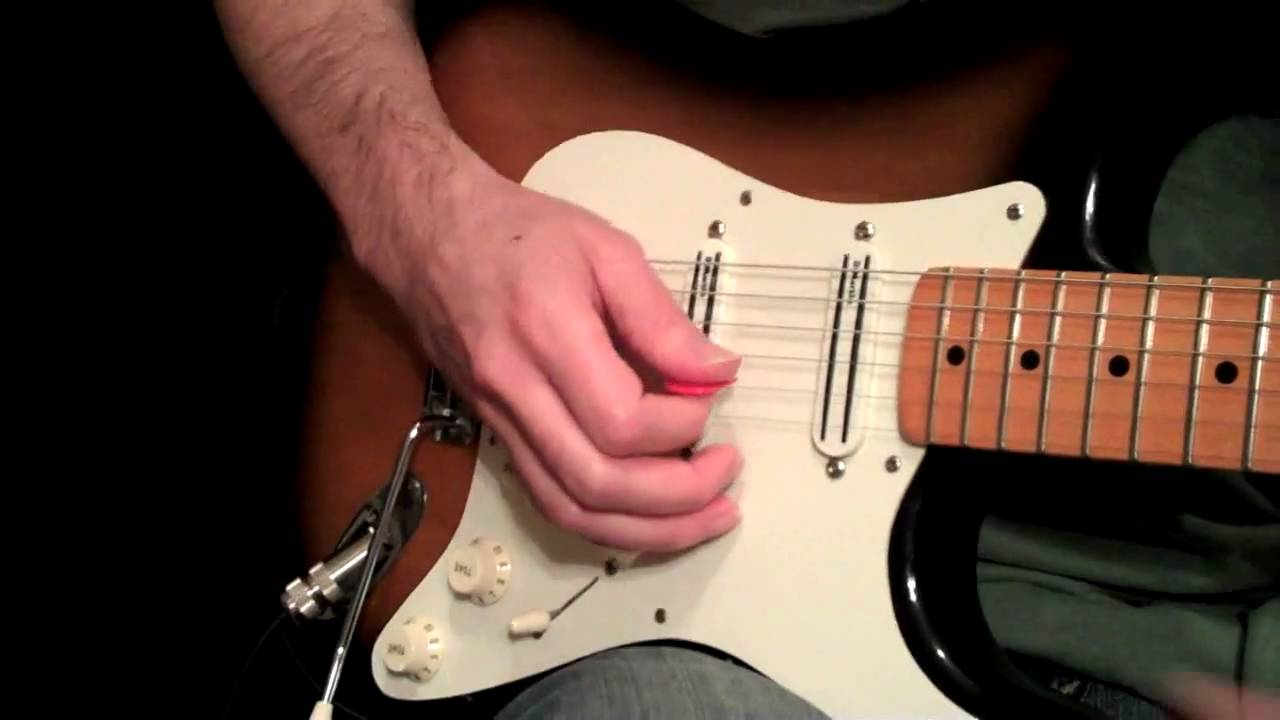
Picking Styles For Guitar
Picking Styles
When it comes to picking on the guitar, there are a wide variety of techniques at our disposal to achieve the effect we’re looking for. Certain picking techniques suit specific genres and others can be applied pretty much across the board. It can be easy to get caught up learning the actual notes and phrases that we forget how crucial our picking is to playing them. Discovering new picking techniques can really open new doors in terms of what you are capable of playing and will improve the co-ordination between your picking and fret hand. So read on to find out about some of these techniques, how to use them and where you can expect to find them!

Alternate Picking
Alternate picking is probably the most commonly used of all the techniques, so a good place to start if you’re finding out for the first time. As the name suggests, it requires using the pick to strike the string in an ‘up, down, up, down’ fashion. When you get proficient at alternate picking it can be used to achieve great speed and accuracy. It lends itself to pretty much every style of playing due to its simple and effective nature, but gets notoriety from its ability to produce lightening fast scale runs and shredding solos in metal and rock genres. It’s bread and butter for any budding shred head.
Sweep Picking
If you know who Jason Becker is, then you will know what sweep picking is. If you don’t, go listen to ‘Altitudes’ and hear it in all its glory. To sweep pick is to strike the strings in a raking motion, playing each one in a fluid movement, like a strum but slightly slower and more controlled. This is usually accompanied by an arpeggio played on the fret hand outlining a chord shape, but releasing each note as it is played resulting in the notes sounding individually and yes… it is as difficult as it sounds. Sweep picking is widely recognised as an advanced technique and is usually mastered by those willing to sit in front of a metronome for hours on end, but once perfected it can sound incredibly impressive and is definitely worth the patience.
Finger Picking
Learning how to finger-pick is a must for all guitarists. You simply can’t achieve the effect of playing multiple notes across different registers as easily with a plectrum. Learning to use all your fingers independently to pick the strings can take a while to master as it requires a lot of accuracy and dexterity, but is essential to playing certain styles of music, especially if you’re a fan of folk or country. Many people associate finger-picking with acoustic guitar but it can be highly effective on the electric too. Many famous Jazz guitarists use finger-picking as it works well for vamping chords and being able to separate tones accurately, which would ultimately be more difficult with a plectrum alone.
Hybrid Picking
Hybrid picking is the combination of using a plectrum and the remaining three fingers on your picking hand at the same time. Again, another advanced technique, but when used effectively allows you to play patterns not possible with the pick alone. The general idea is to use the plectrum to play lines within the middle strings while the remaining three fingers can pick notes on the strings above, allowing you to play notes on different strings in quick succession. This is a really popular technique in country and blues styles, think of it as the benefits of finger-picking with the added clout of the pick.
Down Picking
Exactly what it says on the tin. Using exclusively downward strokes in your picking pattern. The downward motion really adds some beef to the resonance of the string and can add a driving momentum to your riffs. Rock and roll features a lot of this technique as it creates a more aggressive sound and often requires more attitude than accuracy. This technique can be made
even more effective when combined with some of the other techniques mentioned in this article as it creates a contrast in the timbre of the guitar.
Tremolo Picking
The word tremolo is one to be familiar with in the guitar world, it pops up in all sorts of places: effects pedals, amps, guitar hardware and of course… picking. In its literal terms, it is defined as a shaking or vibrating sound achieved from repeating the same note or two notes in rapid succession. At its core, it’s a development of alternate picking, just using it on the same string at even but incredibly fast intervals. The result is a tremulous flurry of notes rolling one after the other which can give a really cool effect. Although it is one of the more obscure and less frequently used techniques, you can find it in a surprising amount of genres, from Rock and Metal to Country, Flamenco and even Banjo playing.
Muted Picking (a.k.a Palm Muting)
If you’ve been playing guitar for a little while now you will have more than likely come across palm muting. Even if you’re a beginner you will have definitely heard it somewhere. A well used technique in any guitarists arsenal, palm muting is a techniques that produces a very different sound from the guitar. It is achieved by resting the underside of the picking hand on the strings, thus dampening the resonance of the strings when you pick them. Rest on them too much and you will completely choke the notes, too little and you will probably get a nasty resonance with your notes, but get it just right and you can produce crunchy power chords and funky lead lines. The dampening of the string gives the notes a short sharp quality, which when combined with normally picked notes can add a whole new dimension to your playing and gives you more options when creating lines. Again, this is another cross genre technique and features heavily in Pop Rock, Punk to Funk and Jazz.
The real beauty with these picking techniques comes when you combine them into your playing and use them together. Each technique can create different moods and tones from the guitar so using them carefully can make your playing sound more varied and interesting. So have a practice through each technique and find the ones you really like and could see yourself using regularly. Listen to examples and start including them in your own playing. Picking is paramount to becoming an awesome guitarist. I was once told by an old tutor “a guitarist is only as good as his picking. If your picking sucks, your playing sucks” and I’m inclined to agree.

Picking Styles For Guitar






